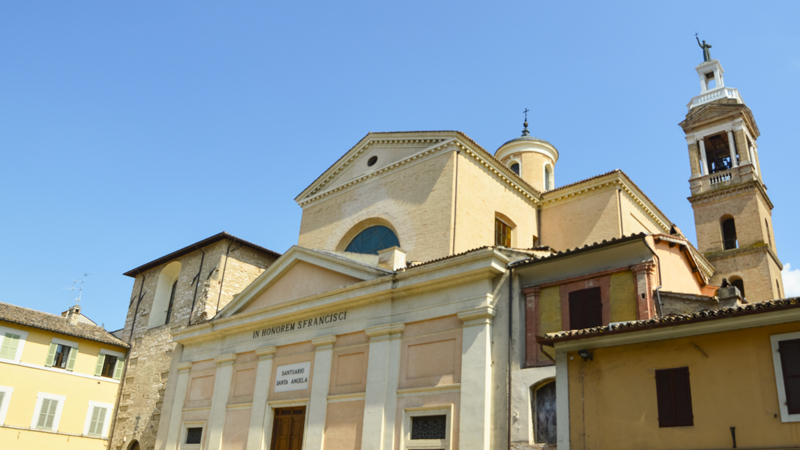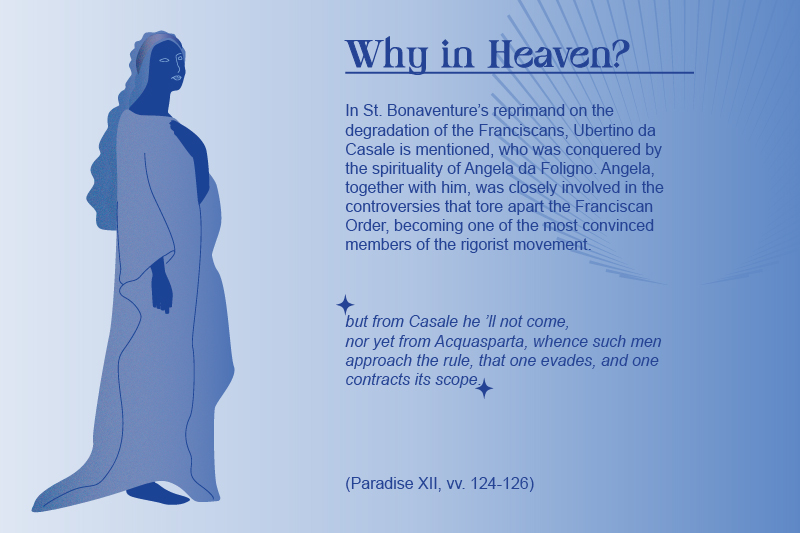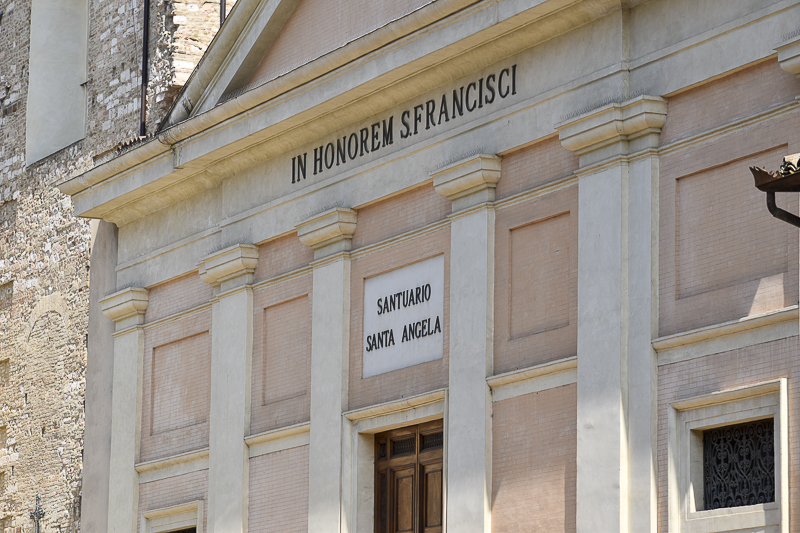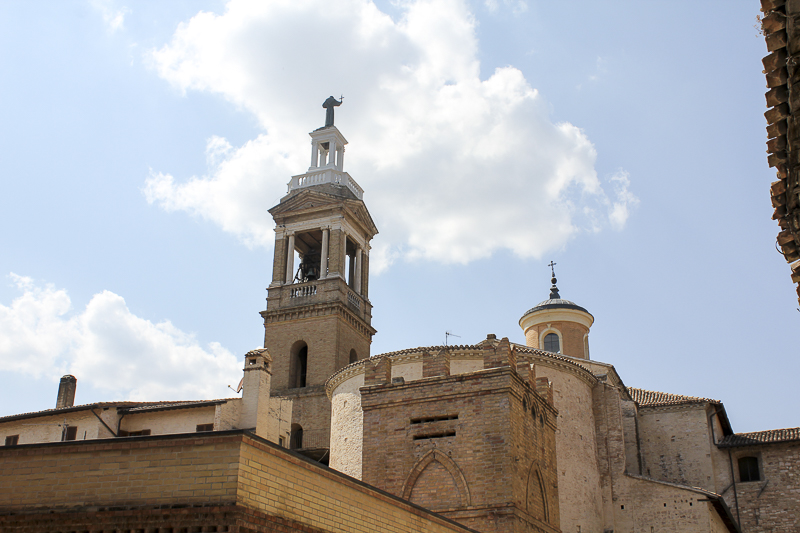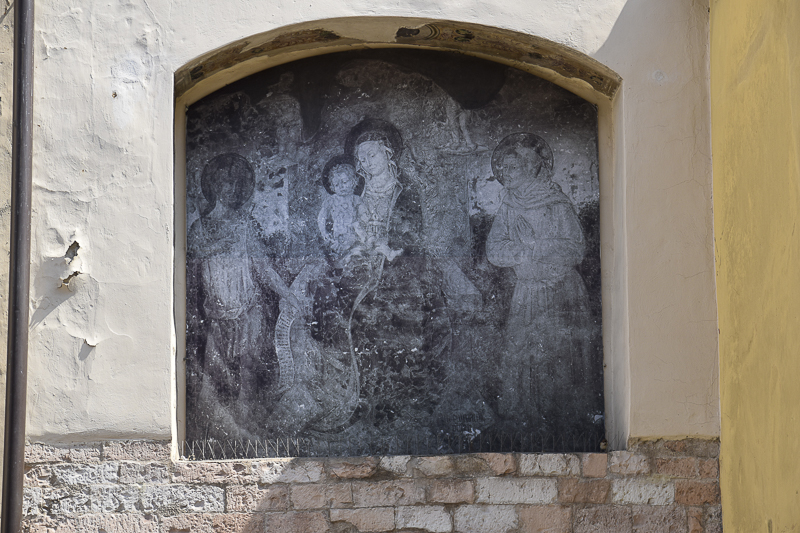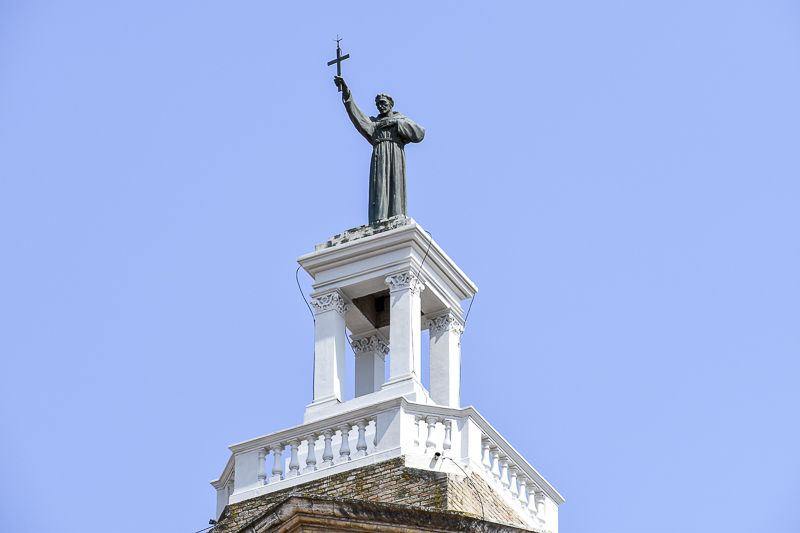The church was built in the thirteenth century in neoclassical style, incorporating the oldest church of St Matthew. It was completely transformed in 1796 based on a design by architect Andrea Vici, and it was completed in the mid-nineteenth century. On the right, on the second altar, there is an urn containing the body of blessed Angelina da Montegiove (born in 1357- died in 1436), the founder of the monastery of Saint Anna, with a canvas by Giuseppe Cades depicting the Vision of the blessed woman. On the third altar there is the urn with the remains of the Franciscan blessed Philip and James, killed in Bevagna in 1377. On the left, on the second altar, there is an urn containing the body of Saint Angela of Foligno (born in 1248 - died in 1309) and a canvas by Gaetano Gandolfi with the representation of the blessed woman. On the main altar there is the painting representing St. Francis who receives the stigmata, painted by Pasquale Sarullo (in 1856). In the chapel of St Matthew, there are numerous fourteenth-century frescoes depicting saints. In the sacristy there is a wooden simulacrum-reliquary representing the Blessed Angela, dating back to the 16th century. Above the access portal to the seventeenth-century cloister there was a lunette frescoed by Pierantonio Mezzastris dated 1499, now housed in the City Museum.

Il progetto Divina Foligno è sviluppato nell’ambito del “programma Agenda urbana di Foligno Smart community - Comunità, Sostenibilità – Foligno 2020” intervento OT.6 INT_01 “Realizzazione della rete di attrattori culturali attraverso la realizzazione di itinerari culturali e tematici

The Divina Foligno project is promoted and financed as part of the "Urban Agenda of Foligno Smart community - Community, Sustainability - Foligno 2020 program" intervention OT.6 INT_01 "Creation of a network of cultural attractions through the creation of cultural and thematic itineraries"

Copyright © 2022 Landmark. All rights reserved.

